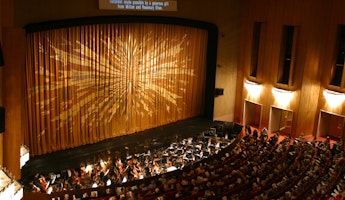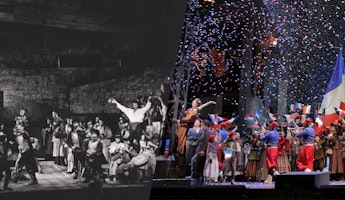Blog
December 14, 2023
"The Dwarf" Autobiographical Origins
"Life imitates art far more than art imitates life.”
So says Oscar Wilde in his 1889 essay The Decay of Light. Just eight years prior, Wilde had published The Birthday of the Infanta. The short story follows a Spanish princess on her birthday: a sultan gifts her a dwarf, the dwarf is unaware of his standing and woos the princess, the court is entertained, and the princess plays along. It all comes crashing down once the dwarf sees his reflection for the first time. The princess rejects him, he subsequently dies of heartbreak.
It’s hardly Wilde's most famous work, but it’s perhaps the one that rings most true to his quote cited above. For in 1922, composer Alexander von Zemlinsky, inspired by his real-life relationship with Alma Schindler (later known as the composer Alma Mahler), turned The Birthday of the Infanta into a one-act opera titled The Dwarf.
Zemlinsky and Schindler first crossed paths in February 1900 at a dinner party in Vienna. It was far from love at first sight. Schindler wrote in her diary that he was “dreadfully ugly, almost chinless.” Combine this with Zemlinsky’s height—he was 5’2 while Schindler was 5’6—and his nickname of “the skinny dwarf” and you can understand some of the composer’s self-esteem issues. For his part, Zemlinsky thought Schindler was vain and found her social circle nauseating but was nevertheless infatuated with her beauty. In return, Schindler was fascinated with his brilliance.
Despite initial impressions, he became her composition teacher. Zemlinsky would stop by frequently to instruct Schindler, and after lessons they would spend personal time together. Their feelings gradually deepened, with another of Schindler’s diary entries claiming she would gladly start a family with him, with children who would have her beauty and his brains. Yet Schindler’s friends and family pressured her to end the affair, citing Zemlinsky’s lack of international reputation and his physical shortcomings. Soon, her words of endearment soured into aesthetic and antisemitic mockery, and her excuses against furthering their courtship led Zemlinsky to the brink of a nervous breakdown.
Not long after, Schindler met the composer and conductor Gustav Mahler at a dinner party and began an affair with him. The pair became engaged on December 8, 1901. Zemlinsky found out about it four days later. He poured his heartbreak into the orchestral fantasy The Mermaid, but it clearly haunted him long after the fact, so much so that he returned to the memory in 1919 to begin composing The Dwarf. Perhaps it was his own unhappy marriage—by then he was married to Ida Guttmann—that spurred it, or Alma Mahler’s second marriage to Walter Gropius after Gustav Mahler’s death that led him to reminisce.
Whatever his personal reasons, Zemlinsky clearly identified with Wilde’s protagonist, so hopelessly in love with a woman that he is incapable of seeing past his physical appearance. If The Mermaid captures Zemlinsky’s initial feelings of heartbreak, The Dwarf paints a far broader picture of his social standing and his lonely realization that no one sympathized with his side of the situation. The Dwarf conveys heartbreak in such a visceral, gut-wrenching way that you can’t help but feel you’re watching Schindler’s rejection of Zemlinsky in real time.
It’s strange to think that Zemlinsky’s life would so closely resemble a short story written years before he had even met Alma Schindler but, as Wilde says, life imitates art more than art imitates life. And it was only through art that the composer was able to express his suffering at a time when the world offered no sympathy. Though Zemlinsky’s career never reached the heights of Gustav Mahler’s (doubtlessly adding salt to the wound), his work continues to be rediscovered and performed with increasing frequency as modern audiences resonate with his brilliance, creativity and the depths of authentic emotion behind his music.








/03-cosi/_dsc0996_pr.jpg?format=auto&fit=crop&w=345&h=200&auto=format)
















